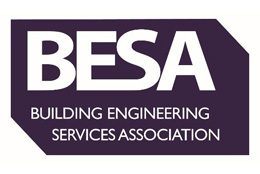BESA launches updated and expanded HIU test standard

The Building Engineering Services Association (BESA) has unveiled a new UK test regime for Heat Interface Units (HIUs), which replaces the original standard developed in 2016 and revised in 2018.
BESA’s UK HIU Test Regime has been considerably expanded and enhanced to improve the information available to specifiers and to ensure a better experience for end users. It was designed with consumer protection in mind and to ensure the market meets the needs of those developing and designing heat networks.
The test regime is a voluntary process that gives manufacturers an independent method for testing, assessing, and comparing the performance of products. It has already been successful in improving HIU performance across the sector by providing specifiers with the necessary information to make informed decisions about which HIUs to select for their projects.
HIUs extract heat from district heating networks to feed individual buildings and dwellings and the way they perform is central to the overall efficiency of the system. The BESA Standard originally emerged from an efficiency research project supported by the UK government to try and improve the performance of a technology seen as central to the decarbonisation of the country’s heating.
It has subsequently been developed and updated by the BESA HIU Steering Group, which is made up of representatives from all sides of the testing process. It engages with stakeholders right across the sector from developers, specifiers, and purchasers, through to manufacturers, installers/suppliers and ultimately, the customer.
This third edition of the HIU standard includes some significant improvements and has been expanded and restructured into a modular approach that allows for the testing of additional types of HIU including space heating only models. It also introduces a DHW load test and changes to the way the annual volume weighted return temperature (VWART) is calculated.
It now covers seven different types of HIU and has pass/fail thresholds leading to registration of a successful test. The new modular nature of the tests is designed to minimise the amount of re-testing but maximises the information provided to specifiers.
Testing to the standard allows the performance of different HIUs to be evaluated in typical UK operating conditions and provides evidence of compliance with other performance and reliability metrics, such as domestic hot water response times.
The result is verified by a BESA technical consultant before being published on the BESA HIU Test Register. The information is then available to help specifiers make informed decisions about the type of HIUs to select for their projects.
The regime is run as a not-for-profit project by BESA and all the income from testing is invested back into the future development of the scheme. Any manufacturer who decides to publish their test results on the Register database can claim that they are ‘BESA registered’ and can use the Association’s logo.
Gareth Jones, BESA HIU Steering Group chair, said: “We are delighted to be able to unveil the next stage in the development of HIU testing in the UK. The original test standard has already had a significant positive impact on industry, but the new standard represents a major step forward, both with respect to raising standards, but also because it recognises a shift to low carbon technologies.
“The introduction of the new test standard is particularly timely given the impending introduction of a Heat Network Technical Assurance Scheme as part of upcoming heat network regulations,” added Jones, who is also managing director of Fairheat. “The shift to including hard pass thresholds in the test standard fits well with these new requirements and will provide greater assurance to the market.
“Another great thing about the Standard is that it demonstrates the positive impact that consumer-led initiatives can have on market development.”
More than 50,000 HIUs are installed each year in the UK, and they are playing a growing part in the country’s overall decarbonisation strategy. This makes setting performance standards increasingly important, according to BESA.
Mr Jones concluded: “Ultimately, it will be consumers who benefit from the improved performance of heat networks as manufacturers use the test outputs to carry out more research and refine their products, and specifiers are helped to make increasingly better-informed choices.”




















